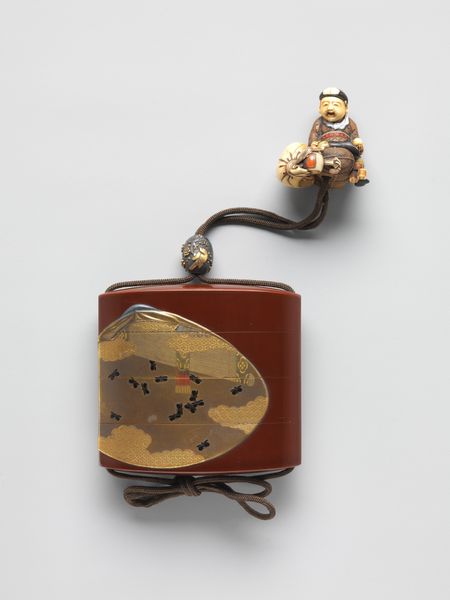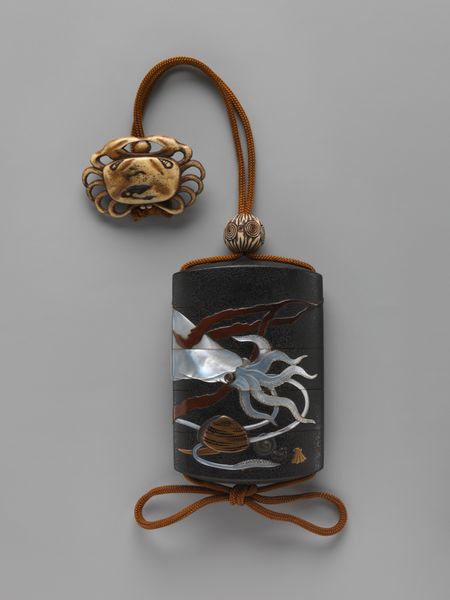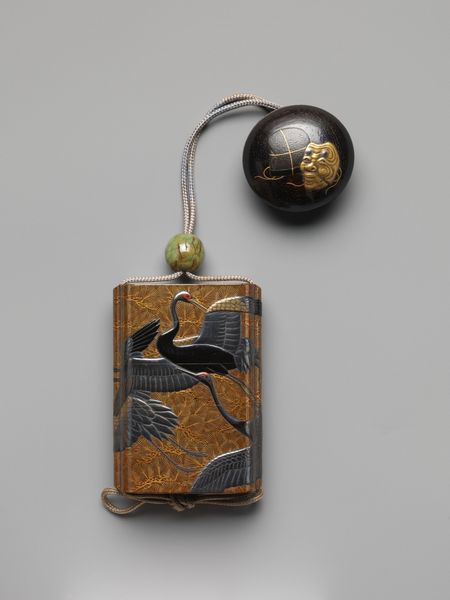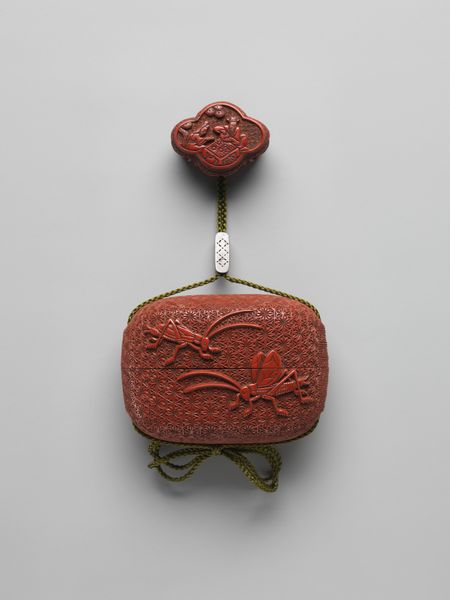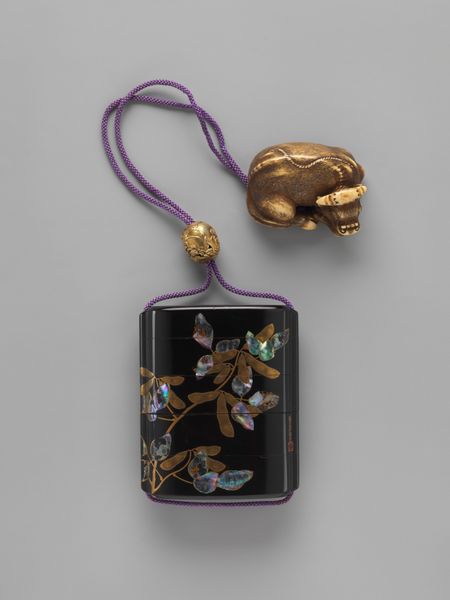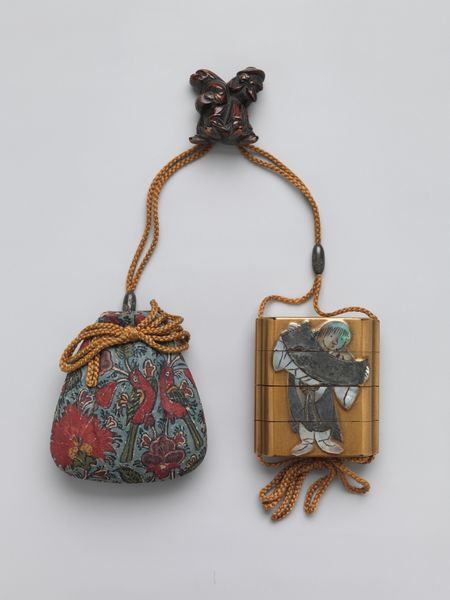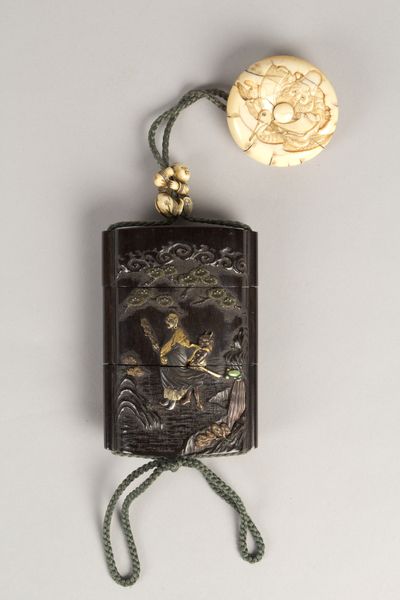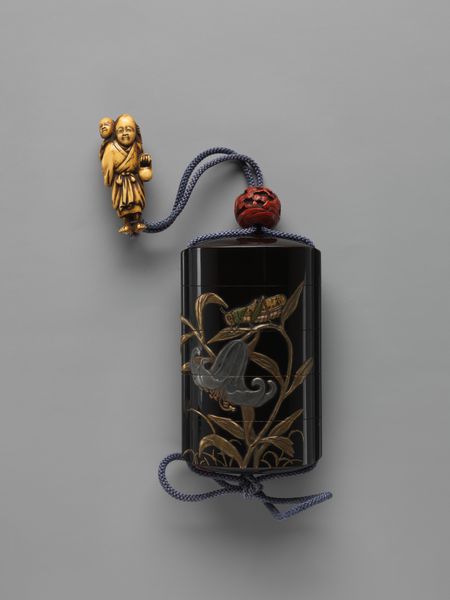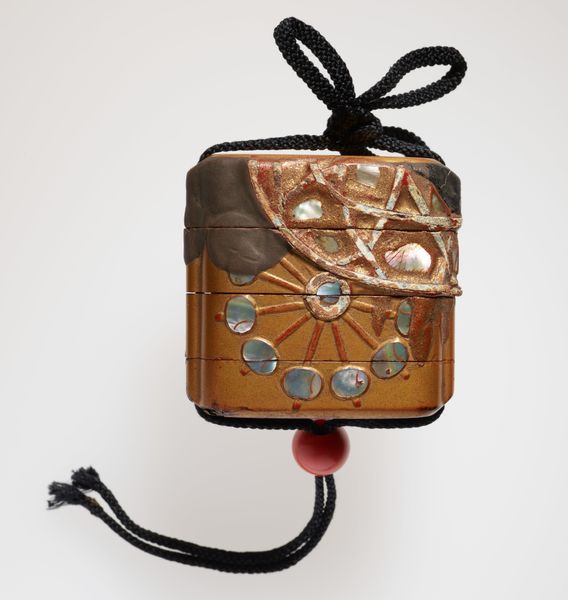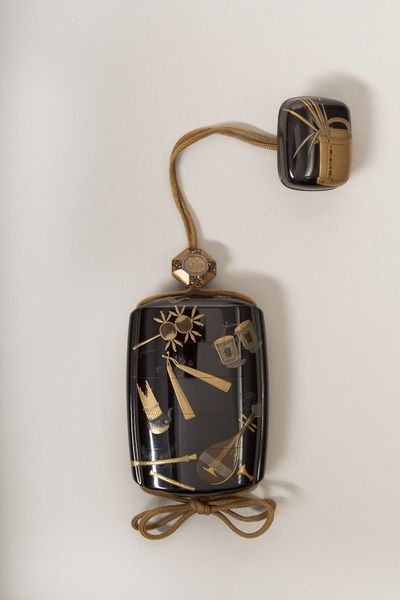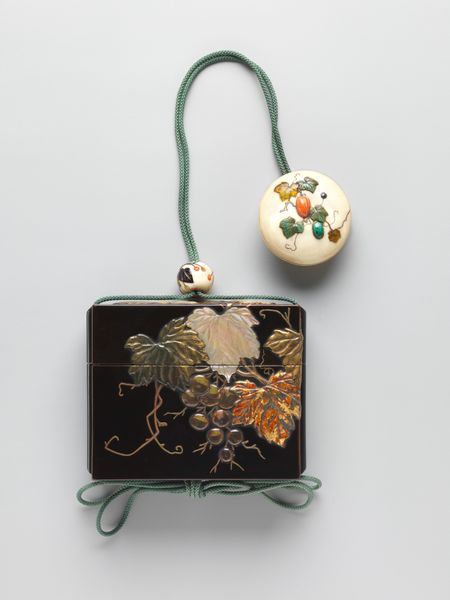
mixed-media, metal, wood, ivory
#
mixed-media
#
animal
#
metal
#
asian-art
#
wood
#
decorative-art
#
ivory
#
miniature
Dimensions: H. 2 11/16 in. (6.8 cm); W. 2 3/4 in. (7 cm); D. 7/8 in. (2.2 cm)
Copyright: Public Domain
Curator: Here we have an Inrō with Dragonflies, crafted between 1750 and 1799 by Kōami Nagataka. It's a mixed-media piece, primarily featuring wood, metal, and ivory. The craftsmanship here is remarkable—what strikes you first about this object? Editor: It’s just so contained, isn’t it? Like a tiny universe humming with buzzing dragonflies. There's something elegant but also secretive about the layered construction—almost like a precious puzzle box. Curator: Precisely. An Inrō such as this was not just a decorative object; it was functional. These small cases, often divided into compartments, were used to carry personal seals, medicine, and other necessities, suspended from the obi sash in traditional Japanese clothing. Consider the material choices: the wood and ivory lend themselves well to intricate carving. The use of metal not only enhances the aesthetics but also the durability. The dragonflies—the surface decoration—provide clues as to the possible tastes or social class of its owner. Editor: I like that. It’s a very efficient piece. Those little dragonflies are charming but fierce. The contrasting gold and red against the dark background really make them pop. Makes me think, were these personalized? Did people select certain designs, or materials based on individual or social meanings? And that miniature boar attachment is such an unexpected little detail. Curator: Absolutely. While standardized designs existed, there was ample opportunity for customization. High-quality materials signified wealth. The boar, the ojime as it’s called, serves as a fastener, showcasing sophisticated craftsmanship even in its small scale. Furthermore, dragonflies in Japanese art often symbolize summer, strength, and victory. Editor: Summer, strength, and victory... It is strange, isn’t it? To think something so refined carried around little everyday items? Curator: Exactly! Inrō offer a window into daily life, consumption, and artistry of the Edo period, revealing the value placed on meticulous creation and everyday objects, and they reveal status. Editor: This whole thing’s such a reminder that beauty and purpose aren't mutually exclusive, even on a miniature scale. A tiny powerhouse of symbolism and craftsmanship!
Comments
No comments
Be the first to comment and join the conversation on the ultimate creative platform.
